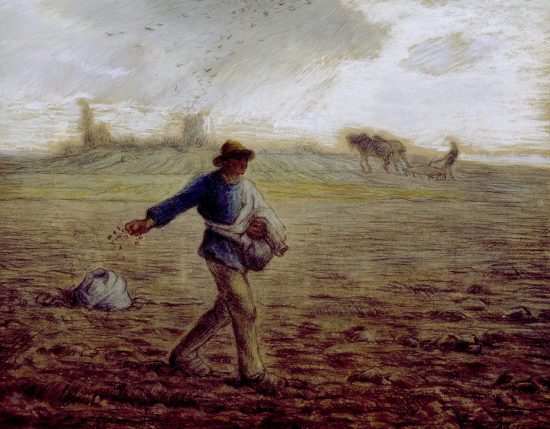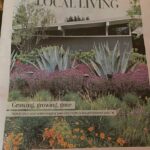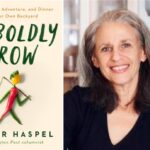

Watching a seed’s cotyledon (sprout) break through the soil is pure joy! I am particularly drawn to flower and tree seeds, though Rose and I also collect seeds from our small vegetable garden. Our thanks go out to all those talented seed experts out there!
Jean-Francois Millet, known as The Sower.
“Both are laborers and each will reap his harvest according to his efforts” (1 Corinthians 3:8-9).
Since 1977, I’ve been collecting and sowing seeds in gardens, parks, neighborhoods, cemeteries and the wild. (This isn’t the first time I’ve written about seed collection or sowing.) If I were taken suddenly away to Heaven this month, there would likely be mysterious clues of seemingly random seed selection scattered about my office; loved ones would find seed samples from annuals, perennials, vegetables, trees and even one hardy palm–all collected in envelopes or brown paper sandwich bags–if I ever left for heaven this month!
My token effort with seeds pales in comparison to the legacy left behind by early seed experts who began domesticating plants and seeds thousands of years ago, known as early plant domesticators or “plant domesticators.” Their five world hearths of plant domestication provided South America with potatoes (Bolivia still maintains over 1500 varieties). Mexico provided corn; Africa gave us soybeans and millet; The Middle East contributed wheat and barley; while Southeast Asia, of course, boasts rice production.
My Great-grandfather Sam Stone Bush created this pen and ink drawing.
Kentucky plays a small but vital part in this story–in more ways than one. Although neither horses, tobacco, hemp or fried chicken come close to matching its historic importance in Kentucky agriculture, its pumpkin relative remains of historical interest there. A clue was discovered in Kentucky as to one of its possible ancient cousins–gourd–if not its direct progenitor–the gourd. Seeds were discovered at Red River Gorge in Powell County with hard shelled pepo squash found there being preserved within rock shelter dry environment of rock shelter. (Cucurbita pepo is a New World species which includes squashes as well as pumpkins; subspecies ovifera being hard shelled pepo squash while subspecies pepo subspecies pepo subspecies ovifera being hard shelled while Subspecies pepo is pumpkin.)
Kentucky may have played an essential part in plant domestication over millennia ago when native people in Kentucky began selecting and growing seeds of early pepo squashes and chenopods (lamb’s-quarters!) with larger seeds with thinner seed coats for improved germination rates.
First it was assumed that seeds found in Kentucky had been domesticated over millennia for improved performance by indigenous people, but according to research published in the Journal of Ethnobiology by C. Wesley Cowan and Bruce D. Smith (1993), these were wild seed, representing one of the easternmost locations for subspecies var. ozarkana subspecies found anywhere in North America. Carbon dating tests confirmed this was more than 4,500 years old!
(Here, the Trail of Pepos takes an unexpected turn: mitochondrial DNA studies suggest that subspecies ozarkana may have been the progenitor for subspecies ovifera; according to mitochondrial DNA research, subspecies ovifera may have given rise to pumpkin. But all this remains an educated guess based on haplotypes; likely there were two separate genetic lines at work).)
Wes Cowan and Allen Bush pose at the opening of a rockshelter in Red River Gorge during summer of 1977.
Archaeologist Wes Cowan, founder of Cowan Auctions and PBS History Detective Wes Cowan was my college roommate; in an email he informed me that Kentucky does not constitute the sixth hearth for plant domestication.
“Archaeological evidence points towards this pattern of cultivation being widespread; evidence has been discovered as far south as Arkansas’ White River drainage. Kentucky stands out because its rock shelters created microclimates which preserved seeds. Similar conditions were also found in Eastern Tennessee, Mammoth Cave system in Kentucky and Ozark rock shelters; although no definitive ‘hearth’ for Eastern domesticates to emerge has yet been identified.”
Kentucky may not compare with South America, Mesoamerica, Africa or Southeast Asia when it comes to seed players but we certainly play our role archaeologically and through heirloom preservation efforts. Stories abound about many passalong vegetable seed strains found here.
Bill Best and Dobree Adams, both fiber artists and photographers from Kentucky, released Kentucky Heirloom Seeds: Growing, Eating and Saving last year. In it are listed dozens of delicious regional seed strains accompanied by fascinating stories about their origins as well as who created them and the people responsible.
Bill Best has spent much of his career looking backwards in order to save our future. For four decades at Kentucky’s Berea College he was professor, coach, administrator and co-founder of their Sustainable Mountain Agriculture Center; during that time he told me “the high price of cheap food had robbed flavors away”. In an interview I conducted with him in 2016, Bill told me about this phenomenon – when food costs became prohibitively expensive because flavor lost its place.
Best recognized that it was time to return to a time when heirloom bean strains were shared in communities simply because they tasted delicious.
The Best Quest: In search of flavorful homegrown regional vegetables. As a child in Haywood County, North Carolina’s Blue Ridge Mountains, he experienced first-hand how tasty heirloom green beans and tomatoes could taste.
He noticed that many of the more popular green bean seed strains lacked the taste he remembered from his youth; modern hybrids were designed for mechanical harvesting. He couldn’t believe just how inedible Blue Lake beans were: “I couldn’t believe just how bad Blue Lake bean were.
Best founded the non-profit Sustainable Mountain Agriculture Center in the 1990s in order to demonstrate that products produced locally could compete with large farms on quality, and to bring quality heirloom fruits and vegetables back into prominence as important elements in sustainable mountain agriculture. We hope that through this Center mountain agriculture may become sustainable.







